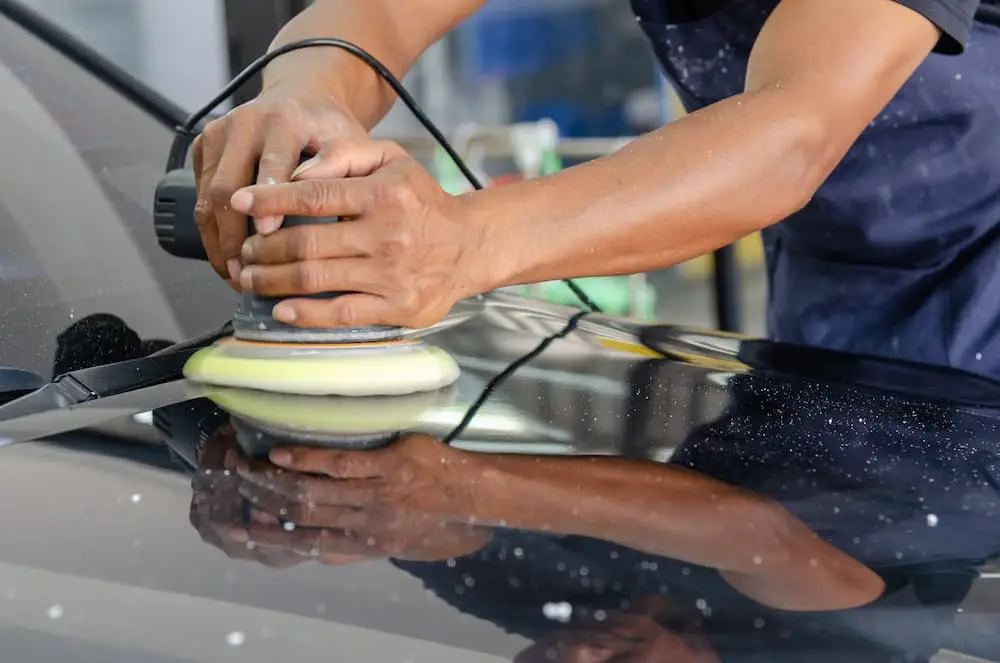
It is natural after long-term use for your car to have imperfections. This is when many car owners encounter the dilemma between choosing a buffer or a polisher. While it might seem like they both do the same thing, which is even out the imperfections.
There are some significant differences that set them apart. In this article, we are going to be talking about the differences between buffers and polishers and conclude which tool is actually better. Read ahead to find out more!
What is a Buffer and How Does it Work?
Buffering is the process of using a polishing substitute to aid in removing defects, pigmentation, oxidation, harsh scratches, or any other imperfections. Doing so helps retain the shine of the car and leaves it with a glossy finish.
Caustic soda is used in the buffer cleaning process. As such, buffers help to maintain the pH balance. When a weak acid comes in contact with a strong alkali, the surface gets contaminated because of the drastic change in pH levels.
Buffers help to control the reaction and prevent any significant change. People prefer buffers over hand waxing because of their efficiency. You can get twice the amount of work done at a much faster speed.
What is a Polisher and How Does it Work?
If you think about it, polishers and buffers aren’t really that different. Polishing is the process of using a product containing abrasives to smooth out any imperfections. It is used to restore paint and leave the car with a shine.
A polisher typically has 4 parts, the motor, spindle, backing plate, and pad. All the parts work together to keep the polisher running. The backing plate also called a rotating disk moves in a circular motion with the help of the motor.
The pads come in a wide variety of sizes and materials from wool to foam to microfiber. It is the polishing pads that contain the abrasive product to directly work on the imperfections.
Related Reading: Makita 9237CX3 Review
Rotary Buffer
Rotary buffers as the name suggests uses a rotating mechanism to remove imperfections like deep scratches, noticeable swirls, and defects. The pad rotates by making circles within its diameter. It works in one direction without leaving any permanent or apparent changes.
This machine is not recommended to use by beginners. This is because of how high in power rotary buffers are. If you hold the machine in one place for too long or apply too much pressure there is a risk of burning through the paint and leaving a hologram or buffer trail.
Orbital Polisher
Unlike rotary buffers, orbital polishers are easy to handle. As such, even a beginner can use this machine without the fear of damaging the vehicle. Instead of one-way circles, orbital polishers keep on constantly changing their directions making axis alterations. The orbital pads are gentler and work relatively faster. They can be used to fix slight to moderate imperfections.
There are three subcategories of orbital polishers, fixed, dual-action, and forced rotation orbital polishers. Fixed orbital polishers are used to apply wax to your vehicle. These heavy machines are developed to imitate that of a circular hand movement. They produce a lot of vibration which may lead to some long-term health problems like arthritis. As such, fixed orbital polishers are usually not the first choice.
Dual-action orbital polishers are one of the most popular choices among experts. The motor in this machine moves the pad in such a way that it makes circular hoops. Not only are you getting all the spots, but taking care of every problematic area.
The machine stops spinning when enough pressure is not applied. So there is no need for you to worry about damaging the car. It is light and super easy to use without leading to any adverse health problems.
Forced rotation orbital polishers are the go-to machine for any noticeable defects on your car. Unlike dual-action polishers, forced rotating polishers will not stop spinning when enough pressure is not applied. As such, there is a high risk of potentially damaging your car. It is recommended to be used by professionals or experts.
Related Reading: Random Orbital Buffer vs Dual Action Buffer vs Rotary Buffer Comparison
Buffer vs. Polisher
Now that you have an idea about both the machines, it is safe to say that buffers and polishers are essentially the same thing! These machines are used to clean and polish the surface of your car leaving it with a smooth finish. The only stark difference lies in their mechanism. It is prevalent in the different types, rotary buffer and orbital polishers.
If you just want to add a shine to your car and remove any light imperfections, polishers are your go-to. However, for more prominent defects it is wise to use a buffer instead. Now one might wonder, then why don’t people only use buffers.
They will smooth out all the imperfections and leave your car with a shine. The answer lies in the price. If you do not have any major scars or oxidation, then why spend extra bucks on buffers when you only need polishing.
Final Words
To summarize this article, we can conclude by saying that buffers and polishers are basically the same. When determining which machine to get, prioritize your budget, requirements, and skill level.
